The Business of Ideas
by Jennifer Southall
It’s a long way from ‘Eureka!’ to a new product on the shelf, but thanks to UM’s new technology-management team, more and more faculty innovations are on track to commercialization
“I
came to Ole Miss in the summer of 2000, primarily because of the way the [university] was managing intellectual property, even at that time,” says Michael Repka, assistant professor of pharmaceutics and research assistant professor with the Research Institute of Pharmaceutical Sciences. “One of my goals when I came here was to create a spinoff business, and I saw I could get that done—that the impediments would be minimal.”
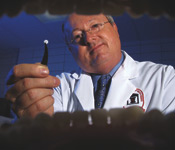
Michael Repka, an assistant professor of pharmaceutics and former practicing dentist, was attracted to UM because of the university’s management of intellectual property. He has launched his own company to manufacture new drug-delivery systems and oral-care products.
Robert Jordan
Indeed Repka, a one-time practicing dentist who before coming to UM founded a company that specializes in drug delivery to the oral cavity, has managed to create that spinoff he talked about; the company, which is still seeking investors, will manufacture a number of drug-delivery systems, primarily oral-care products. Also, two of Repka’s technologies have resulted in license/option agreements since his arrival. And with calls from industry coming in regularly, he sees endless opportunities to participate in technology transfer.
“I took a chance in coming here,” says Repka, who holds both a doctorate in pharmaceutics and a dentistry degree. “So far, there have been so many opportunities. It’s very exciting.”
It’s exciting, too, that those opportunities Repka speaks of are now available outside the School of Pharmacy, thanks to the Office of Research and Sponsored Programs’ recent creation of the Division of Technology Management, which facilitates transfer of technologies from all academic disciplines.
Priming the Pump
The phrase “technology transfer” refers to the “formal transfer of rights to use and commercialize new discoveries and innovations resulting from scientific research to another party,” according to the Association for University Technology Managers, the primary professional association and source of data for those in the field. The process generally includes disclosing the new information and protecting it through patenting before commercialization takes place.
The division lists 17 technologies under license or option agreements
The benefits of successful technology transfer from academia are widespread. Besides making available to the public products ranging from a hepatitis B vaccine to Internet search engines to synthetic penicillin, university technology transfer has added billions of dollars and hundreds of thousands of jobs to the U.S. economy since 1980, when federal legislation made the process more feasible.
Before Congress passed the Bayh-Dole Act in 1980, any new discoveries resulting from federally sponsored research became the property of the federal government; for institutions to commercialize their researchers’ technologies, the institutions had to submit to a one- to two-year process of seeking permission from the sponsoring government agency. Institutions were required to do this on a case-by-case basis, and the results were usually unsuccessful. Bayh-Dole, co-sponsored by U.S. Sens. Birch Bayh and Bob Dole, allowed universities, nonprofit research institutions and small businesses to claim ownership of and to patent new technologies developed under federal sponsorship.
The legislation created a boom in intellectual property among institutions of higher learning in this country. AUTM cites a December 2002 Economist article that calls the act “the most inspired piece of legislation to be enacted in America over the past half-century.” The article goes on to say that “together with amendments in 1984 and augmentation in 1986, this unlocked all the inventions and discoveries that had been made in laboratories throughout the United States with the help of taxpayers’ money.”
And according to AUTM data, before 1980 “fewer than 250 patents were issued to U.S. universities each year and discoveries were seldom commercialized for the public’s benefit. … Between FY 1991 and FY 2002, annual invention disclosures increased nearly 250 percent (to 15,573), new patents filed increased more than 310 percent (to 7,741), and new licenses and options executed increased more than 365 percent (to 4,673).”
Ann Hammersla, AUTM president and a lawyer in the Intellectual Property Counsel office at the Massachusetts Institute of Technology, says that, despite the numbers, universities new to technology management must realize no “magic bullet” exists for the transfer of intellectual property.
“If you’re looking for return on royalties and on the public benefit, it takes a lot of patience,” Hammersla says. “A University of California study out three or four years ago that looked at what they had done from 1970 until 1999 or 2000 showed that from disclosure to licensing to market takes about five to 10 years. All of our offices, whether established in 1980 or recently, have had to go through the same hurdle.”
But Hammersla says, too, that when an institution has established a good relationship with the identified corporate sponsor, the amount of time needed to develop a technology becomes acceptable. She also points to interim benefits: “Good licenses create job opportunities, and start-up businesses are also very positive.”
Building a Framework
Although hard indicators of success are sometimes difficult—and slow—to come by in the world of university technology transfer, early numbers show that UM’s Division of Technology Management is doing things right. DTM lists 17 technologies under license or option agreements and another 11 in business development. Already licensed technologies include pharmaceutical products in preclinical or clinical trials for treating fungal infections, cancer, AIDS, multiple sclerosis and malaria, while technologies in development include those derived from projects in the departments of art, education, mechanical engineering and computer science.
The office is also leading an effort to establish a UM research park to support start-up businesses and attract existing businesses. In the meantime, the group has helped UM faculty join with regional businesses in securing several Small Business Technology Transfer and Small Business Innovation Research grants from the federal government. And DTM has helped UM’s National Center for Natural Products Research secure a grant from the Mississippi Development Authority to explore the creation of a facility to process medicinal plants and other natural products in the state.
‘The ability to
generate intellectual property is what’s going to keep top researchers here.’
—UM researcher Michael Repka
This commitment to commercialization of technologies and business development, first realized in the late 1990s within the pharmacy school, marks a gigantic shift in the university’s thinking about intellectual property. Throughout the 1980s and up to the mid-’90s, less than 10 percent of patent applications and issued patents resulted in licensing. UM—like most universities—had little framework in place to aid its researchers in transferring their real-world-applicable intellectual property to the marketplace. In recent years, though, the number of license agreements resulting from UM researchers’ patented technologies has jumped to about 70 percent.
Mahmoud ElSolhy, professor of pharmaceutics and research professor with NCNPR, says that, in those early days, “we were waiting for people to come to us rather than going out and finding licenses.” And ElSolhy should know: Three technologies based on his research with marijuana that he patented during the late ’80s and early ’90s were licensed only within the past five years. “Once we got a process in place, the technologies were licensed fairly quickly after that.”
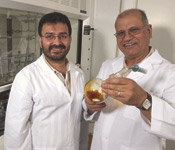
Waseem Gul (left), an adjunct research scientist at the National Center for Natural Products Research, and Mahmoud ElSolhy, professor of pharmaceutics, are working on new pharmaceutical technologies at ElSolhy Laboratories Inc.
Kevin Bain
Evaluating Potential
Both ElSolhy and Repka—and seemingly everyone else who has had a hand in technology transfer at Ole Miss—credit much of their success in licensing intellectual properties to pharmaceutics professor Walt Chambliss, the university’s new director of technology management who oversaw technology transfer for the pharmacy school in his former dual role as interim associate director for business development for RIPS and associate director of NCNPR.
Chambliss, in turn, credits his office’s track record primarily to what he calls the “outstanding research” emerging from UM, and secondly to a streamlined process he and Allyson Best, the pharmacy school’s senior R&D analyst, set up to manage and market that research. That process has proven successful in compressing from months to days the time required for marketing technology and negotiating agreements with industry.
“We want to dispel the notion that universities are slow,” Chambliss says. “We want to stay one step ahead of our identified industry partner. We want to have the next piece of information ready.”
George Kottayil, president of Insys Therapeutics and a scientist who worked for small-, medium- and large-scale pharmaceutical companies before launching his own pharmaceutics business, says the speed at which UM was able to license one of ElSolhy’s technologies to his company was “phenomenal.” “Working with Walt was like a breath of fresh air,” Kottayil adds.
Also playing a role in DTM’s success is the office’s willingness to compromise. “Most universities are not that flexible and insist on using standard agreements that may not be acceptable to the industrial partner,” Chambliss says. “We make sure that the company knows upfront what legal requirements of ours are non-negotiable, and the university attorney does an excellent job of working with a company’s attorney in the rare instances when I’m not able to resolve the company’s concerns.”
But it’s Chambliss’ experience outside of academia that has proven to be UM’s most valuable asset when it comes to technology transfer. Before returning in 1999 to the university—where he received his undergraduate degree in pharmacy and his master’s and doctoral degrees in pharmaceutics—Chambliss worked for 17 years in the pharmaceutical industry. Besides holding research and development positions with G.D. Searle, Bristol-Meyers and Schering-Plough (where he was vice president of R&D for the HealthCare Products Division), he also headed his own firm, which provided R&D consulting to a number of start-up and established pharmaceutical and dietary supplement companies.
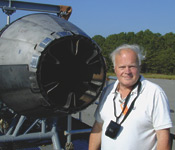
Jack Seiner, associate director for applied research at the National Center for Physical Acoustics, is relying on DTM for assistance in developing a device to reduce jet-engine noise.
Henry Bass
That experience—combined with Best’s business acumen (she holds an MBA) and the expertise of project coordinator Emily Smathers Ratliff, who was hired in part for her background in the chemical industry—set Ole Miss apart, Chambliss says. “Most tech-transfer offices are managed by generalists. I know of only one other university that has our setup.”
According to Chambliss, that setup allows his office to evaluate efficiently and effectively the commercial viability of a particular technology. And Chambliss himself is able to provide each researcher with a realistic expectation of a technology’s potential.
“One of the difficulties in dealing with inventors is that they sometimes have inflated expectations of the value and potential of their technologies,” says Bruce Robb. As former general manager of the pharmaceutical company Mallinckrodt, Robb worked with Chambliss in licensing another technology developed by UM researchers. “One thing that Walt did is manage very well locally. He brought a realization of what to expect. These [university technology-transfer] departments are usually headed by someone straight out of academia. Walt’s worn both sets of shoes, and you don’t find that at other universities too often. It makes a big difference.”
That difference includes actively seeking out industry partners rather than taking a more common passive role. “I go to industry meetings three times a year and take a list of our technologies available for licensing,” Chambliss says. “The companies are always surprised that a university is there, but we have to make sure that people know who we are.”
In addition to Chambliss’ attending industry gatherings, Ratliff is actively planning in-state events to make industry aware of available technologies. In November, UM co-sponsored the Intellectual Property and Technology Expo in Jackson, for example. The highlight was a poster session allowing researchers a chance to showcase and discuss their technologies with venture capitalists and industry representatives. And last fall, UM hosted a meeting of the Technology Resources Foundation, a consortium of Mississippi, Arkansas and Tennessee businesses, universities and organizations interested in economic development through technology transfer. Chambliss sits on TRF’s board of directors and chairs its research committee.
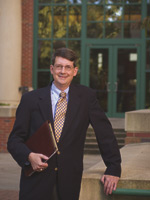
Walt Chambliss uses his experience in the pharmaceutical industry to give UM researchers an edge in dealing with potential investors and manufacturers.
Robert Jordan
Funding the Future
Although Chambliss is lauded by UM pharmaceutical researchers and industry representatives for his technical expertise, he is working to ensure that his lack of experience in other areas won’t slow licensing of technologies in those fields. To that end, Chambliss’ division has put together an intellectual property group, made up of internal experts, to address engineering and the physical sciences. Chambliss and his staff also have been busy spreading the technology transfer message to other areas, such as UM’s School of Business Administration and the Department of Health, Exercise Science and Recreation Management.
Researchers who have worked with UM’s Division of Technology Management say the staff’s efforts are making a difference.
“It’s wonderful that Dr. Chambliss has come on board,” says chemical engineering professor Wei-Yen Chen, whose research focuses on creating a clean coal-burning process. “To be competitive, we need to be technology-oriented. Otherwise, even if we create beautiful science it’s difficult to get funding or recognition. Dr. Chambliss can help me secure an invention disclosure and a patent and, hopefully, a license with industry.”
‘We want to
dispel the notion that universities are slow.’
—Walt Chambliss
Jack Seiner, associate professor of mechanical engineering and associate director for applied research at UM’s National Center for Physical Acoustics, says that the technology management division has been “very beneficial” in helping him transfer to the real world a device that reduces jet-engine noise while increasing engine performance. “Every organization needs something like this. You need someone who can put together a patent in an appropriate way.”
Chambliss is conservative when talking about the potential financial benefits his office can bring to the university—and to the state—but he nonetheless says that he hopes to create an office that is not only self-supporting but that can support further research. He believes that at some point there will be enough left over from royalties—which, after paying off patent expenses, are split among the inventor, the inventor’s department, the inventor’s dean’s office and the Office of Research—to fund commercially promising research.
“The ability to generate intellectual property is what’s going to keep top researchers here,” Repka says. “And in turn, the university benefits tremendously. We’re always going to need [National Institutes of Health]-type grants. But the money that comes in from license agreements creates extreme latitude. To see those kinds of [potential] moneys that have never been seen before—especially in a time of budget cuts—is huge.”
Division of Technology Management helps bring pharmaceutical firm to Oxford
B
arely six months old, UM’s Division of Technology Management has wasted no time. Besides facilitating the licensing of 17 university technologies to industry, the office is working with others at UM, as well as state and local leaders, to attract existing businesses to Oxford.
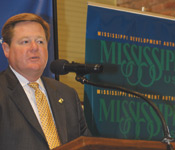
Randy Hoggle announces that BioDerm Sciences will locate its headquarters in Oxford.
Kevin Bain
One business, BioDerm Sciences, a subsidiary of Health Pathways of Gaithersburg, Md., has selected Oxford as the site of its corporate headquarters and its R&D and manufacturing operations.
“We’re locating in Oxford primarily to be close to and to work with the School of Pharmacy,” said Randy Hoggle, CEO and Health Pathways chairman of the board. “There’s a good work force there, and there’s a great relationship between the university, community and state—it’s a very positive work climate. The partnership between us and Ole Miss is one that will provide more benefit than the sum of its parts to both parties.”
BioDerm, which is primarily involved in developing and marketing wound-healing products, plans to create over the next three years approximately 50 jobs, many of those for recent and past graduates of UM research programs. According to Walt Chambliss, the university’s director of technology management, those jobs will allow Mississippi to retain highly specialized pharmaceutical scientists as well as provide opportunities for UM alumni to return to Oxford.
With the addition of BioDerm Sciences to Oxford’s existing pharmaceutical companies—Medical Marketing Economics and ElSolhy Laboratories—and the growing number of pharmaceutical distribution companies near Memphis, Chambliss said that the momentum exists for the development of a “pharmaceutical cluster” in north Mississippi.
 Randy Hoggle announces that BioDerm Sciences will locate its headquarters in Oxford.
Randy Hoggle announces that BioDerm Sciences will locate its headquarters in Oxford.
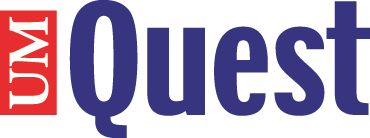
 Michael Repka, an assistant professor of pharmaceutics and former practicing dentist, was attracted to UM because of the university’s management of intellectual property. He has launched his own company to manufacture new drug-delivery systems and oral-care products.
Michael Repka, an assistant professor of pharmaceutics and former practicing dentist, was attracted to UM because of the university’s management of intellectual property. He has launched his own company to manufacture new drug-delivery systems and oral-care products.
 Waseem Gul (left), an adjunct research scientist at the National Center for Natural Products Research, and Mahmoud ElSolhy, professor of pharmaceutics, are working on new pharmaceutical technologies at ElSolhy Laboratories Inc.
Waseem Gul (left), an adjunct research scientist at the National Center for Natural Products Research, and Mahmoud ElSolhy, professor of pharmaceutics, are working on new pharmaceutical technologies at ElSolhy Laboratories Inc.
 Jack Seiner, associate director for applied research at the National Center for Physical Acoustics, is relying on DTM for assistance in developing a device to reduce jet-engine noise.
Jack Seiner, associate director for applied research at the National Center for Physical Acoustics, is relying on DTM for assistance in developing a device to reduce jet-engine noise.
 Walt Chambliss uses his experience in the pharmaceutical industry to give UM researchers an edge in dealing with potential investors and manufacturers.
Walt Chambliss uses his experience in the pharmaceutical industry to give UM researchers an edge in dealing with potential investors and manufacturers.